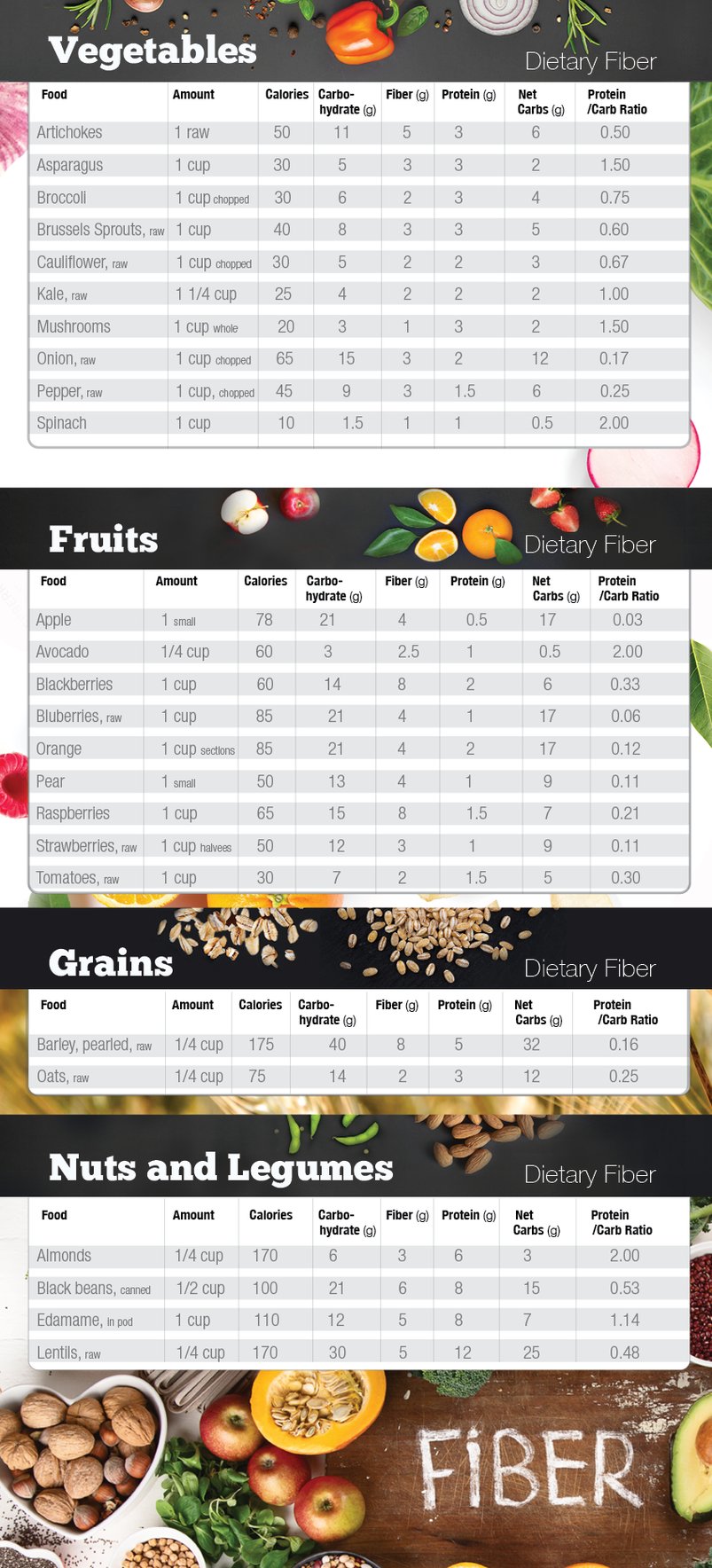Fiber is a word we often hear and see called out on food packaging. Commercials make you think it’s a nutrient for older adults to help with irregularity, lowering blood cholesterol, or even heart health, but it’s actually a nutrient for all ages. Here we’ll tell you what it is, how it fits within the Zone Diet, how much you need, and why Dr. Sears thinks it's beneficial.
What is Fiber?
Fiber is a type of carbohydrate that can’t be digested by the body. This is beneficial because it helps slow down how quickly carbohydrates are broken down into sugar and absorbed. It is found in fruits, vegetables, whole grains, nuts and legumes. It is found naturally in foods but can be included as a food additive during manufacturing, like inulin and oligosaccharides, to help boost the fiber content.
Benefits of Eating Fiber
- Lowers Cholesterol
- Blood Sugar Control
- Weight Management
- Heart Health
- Gut Health
- Regularity
Types of Fiber
Fiber can either be soluble or insoluble. Soluble fiber tends to slow digestion by attracting water and helping foods swell (think oatmeal). Insoluble fiber tends to pass more quickly through the body aiding digestion (think non-starchy vegetables).
Dr. Sears writes extensively about the benefits of fermentable fiber. This can either be soluble or insoluble fiber that reaches the colon where it is fermented by the bacteria in our gut. The result of this fermentation is that it produces beneficial changes in the composition or activity of the bacteria in our gut helping to improve our overall health and well-being.
The Health Benefits of Fermentable Fiber
Intake of fermentable fiber found in foods like non-starchy vegetables plays a critical role in helping to reduce gut-derived inflammation. We now know that the gut and the bacteria that live there have a significant impact on keeping inflammation in our body under control. The higher your intake of fermentable fiber the less risk you have for developing gut inflammation which has been linked to diseases such as obesity, diabetes, autoimmune disease as well as neurological conditions.
How Much Fiber Do You Need Each Day?
Fiber is nutrient for all ages. It is recommended that individuals consume about 14 grams of fiber for every 1000 calories consumed. On average this about 25 grams for women and 38 grams for men per day.

*Amounts based on 14grams/1000 calories
Fiber and the Zone Diet
Individuals following the Zone Diet should meet their recommended intake of fiber per day. Since the diet recommends consuming primarily non-starchy vegetables, limited amounts of fruits, and small amounts of legumes it is naturally a high fiber diet. In general, individuals should aim to consume about 35 grams of net carbs (total carbohydrates minus fiber) at each meal. To learn more about how many carbohydrates you should consume each day and what carbohydrate choices fit within the Zone check out our Body Fat Calculator and Food Block Guide.
Why We Recommend Carbohydrates be Consumed with Protein
Now that you know the ideal carbohydrates to choose it’s important to couple them with low-fat protein and small amounts of heart-healthy fat. The rate at which carbohydrates raise blood glucose varies depending on the type of carbohydrates you eat and whether there is fat and protein in the meal too. Even though vegetables and fruit are the best carbohydrates choices, they still raise blood glucose levels when consumed alone. To further stabilize blood glucose and control inflammation in the diet you want to balance your carbohydrate intake with lean protein found in low-fat dairy, eggs, and lean meats and a small amount of heart-healthy fat. This is the foundation of the Zone Diet. When making a Zone meal we recommend aiming for one that is under 400 calories, has less than 12 grams of fat, 25 grams of protein and about 35 grams of net carbs (total carbohydrates minus fiber). If you have the right balance of protein to the carbohydrate at a meal, you help control hunger and fatigue while minimizing inflammation.
High Fiber Food List
Each of these foods is a good source of dietary fiber and a very healthy choice but it’s important to also take into account the total amount carbohydrates it supplies as well as the protein. Based on this list and the Protein/Carbohydrate ratio you can see why Dr. Sears recommends non-starchy vegetables be the primary source of carbohydrates (and fiber) in the diet as they will have the least impact on spiking blood sugar levels. Those foods with a Protein to Carbohydrate ratio greater than 1 Dr. Sears considers the best.







Let Us Know What You Thought about this Post.
Put your Comment Below.